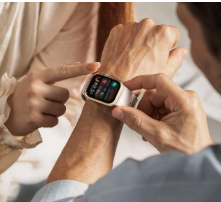The healthcare sector has embraced the digital age, with Electronic Health Records (EHRs) playing a pivotal role in this transformation. EHRs have made patient data more accessible, accurate, and actionable, allowing for faster decision-making and more personalized treatment. These digital records enable healthcare professionals to efficiently track patient health, diagnose conditions, and make informed decisions based on comprehensive, up-to-date information. With the ability to access records instantly, healthcare providers can offer more effective care while reducing the risks associated with paper-based systems. Notably, wearable devices like the Huawei Watch D2 are also contributing to this revolution by offering powerful health-monitoring features, such as blood pressure tracking, that integrate seamlessly with EHR systems.
Improved Accessibility and Accuracy of Patient Information
One of the most significant benefits of EHRs is the enhanced accessibility and accuracy of patient information. Before digital records, physicians had to rely on paper charts, which could easily be lost, damaged, or misinterpreted. With EHRs, all relevant patient data—from medical history to test results—is securely stored in a centralized system. This ensures that healthcare providers have real-time access to the most accurate information, reducing the risk of errors and improving patient outcomes. EHRs are particularly crucial for patients with chronic conditions, as doctors can monitor their progress over time and adjust treatments accordingly.
Centralized and Updated Patient Data
Centralizing patient data in one system allows for easier management of healthcare information. For example, a patient’s lab results, medications, and history of conditions are all available to doctors and specialists, facilitating better treatment plans. This centralized approach ensures that healthcare providers can make more informed decisions quickly, reducing unnecessary delays. For those using smart health devices like the Huawei Watch D2, such devices can track key metrics like blood pressure and heart rate in real-time, directly feeding this data into EHRs. This continuous stream of information makes patient care more responsive and adaptive.
Reducing Errors and Enhancing Accuracy
EHRs reduce the likelihood of human errors that are common with paper records, such as incorrect data entry or misfiled documents. Digital systems can automatically flag inconsistencies and provide real-time alerts, allowing healthcare providers to double-check critical information before making decisions. The integration of health-monitoring wearables, like the Huawei Watch D2, which tracks blood pressure, ECG, and other health indicators, further enhances accuracy. Regular monitoring through such devices helps prevent conditions like high blood pressure, providing an early warning system for both patients and doctors.
Streamlining Communication Between Healthcare Providers
EHRs also streamline communication between healthcare providers, ensuring that all members of a patient’s care team have access to the same information. This is particularly important for patients who require care from multiple specialists, such as those with chronic conditions or complex health needs. EHRs break down traditional barriers between providers, creating a seamless flow of information that improves collaboration and patient care.
Real-Time Data Sharing Across Systems
One of the most powerful features of EHRs is the ability to share patient data in real-time across different healthcare systems. Whether a patient visits a primary care physician, a specialist, or an emergency room, their medical history is accessible to all providers, ensuring consistent care. For example, if a patient with a history of high blood pressure visits a different clinic, their recent blood pressure readings—captured through devices like the Huawei Watch D2—can be accessed and analyzed instantly. This level of coordination allows for more informed, timely care, reducing the risk of oversights or miscommunication.
Enhancing Collaboration Among Providers
EHRs facilitate better collaboration by making it easier for healthcare professionals to communicate and consult with each other. When all providers have access to the same comprehensive data, it reduces the need for redundant tests and ensures that every decision is based on the full picture of a patient’s health. This is especially critical for individuals with complex conditions, who may require care from several different specialties. With the Huawei Watch D2 tracking real-time health data, providers can collaborate more effectively, using accurate and up-to-date metrics to guide their care.
Better Decision-Making and Personalized Care
EHRs not only improve healthcare providers’ access to data but also enable them to make better, more personalized decisions for each patient. With EHRs, providers can analyze vast amounts of data to identify trends, make precise diagnoses, and design customized treatment plans. As wearable technology continues to evolve, it’s becoming even easier to integrate real-time health data, such as blood pressure or ECG readings, into treatment decisions, offering a higher level of personalized care.
Data-Driven Insights for Treatment Plans
EHRs enable healthcare providers to use data-driven insights to create more effective treatment plans. With the ability to track and analyze long-term trends, such as blood pressure changes or heart rate fluctuations, doctors can develop strategies that are tailored to the individual. For instance, if a patient frequently experiences spikes in blood pressure, wearable devices like the Huawei Watch D2 can monitor these fluctuations continuously. By tracking this data, providers can adjust medications, recommend lifestyle changes, or even suggest that patients reconsider habits like excessive coffee consumption, since some believe does coffee high blood pressure.

Customizing Care Based on Patient History
EHRs allow healthcare providers to customize care plans based on a patient’s specific health history and risk factors. With detailed records of past conditions, treatments, and responses, providers can make informed decisions that prioritize the patient’s needs. For example, if a patient has a history of hypertension, their care team can monitor their blood pressure more closely, possibly recommending devices like the HUAWEI Watch D2 for consistent tracking. This level of customization ensures that care is proactive rather than reactive, addressing potential health risks before they escalate.
Improving Patient Engagement and Outcomes
The use of EHRs also empowers patients by giving them greater access to their own health information. With the ability to view lab results, track medical conditions, and even receive alerts about potential health risks, patients can take a more active role in their health management. This increased engagement often leads to better health outcomes, as patients become more informed and involved in their treatment plans.
Empowering Patients with Their Health Data
EHRs allow patients to access their health data at any time, providing transparency and fostering a sense of ownership over their well-being. Whether it’s reviewing recent test results, understanding treatment options, or monitoring chronic conditions, having direct access to medical records can motivate patients to make healthier choices. Wearable devices like the Huawei Watch D2 play an important role in this process by providing real-time health data that is seamlessly integrated into the EHR, enabling patients to make informed decisions based on their current health status.
Enhancing Follow-Up Care and Monitoring
EHRs also improve follow-up care by providing healthcare providers with continuous access to a patient’s health data. This allows doctors to track a patient’s progress after a treatment or surgery and adjust care plans as needed. With the integration of wearable technology, like the Huawei Watch D2, patients can be monitored continuously, ensuring that any changes in their health are quickly detected and addressed. Whether it’s monitoring blood pressure or tracking sleep patterns, these devices provide critical information that can guide long-term health management.
Conclusion: The Future of EHRs in Healthcare
The future of healthcare is undoubtedly tied to the continued advancement of Electronic Health Records. As technology continues to evolve, EHRs will become even more integrated into patient care, helping to create a more personalized and efficient healthcare system. Devices like the Huawei Watch D2, with its ability to monitor vital signs such as blood pressure and heart rate, will play an important role in this transformation, allowing for continuous, real-time monitoring and enhancing the effectiveness of EHRs. The combination of wearable technology and EHRs promises to revolutionize the way healthcare is delivered, improving outcomes for patients and providers alike.

